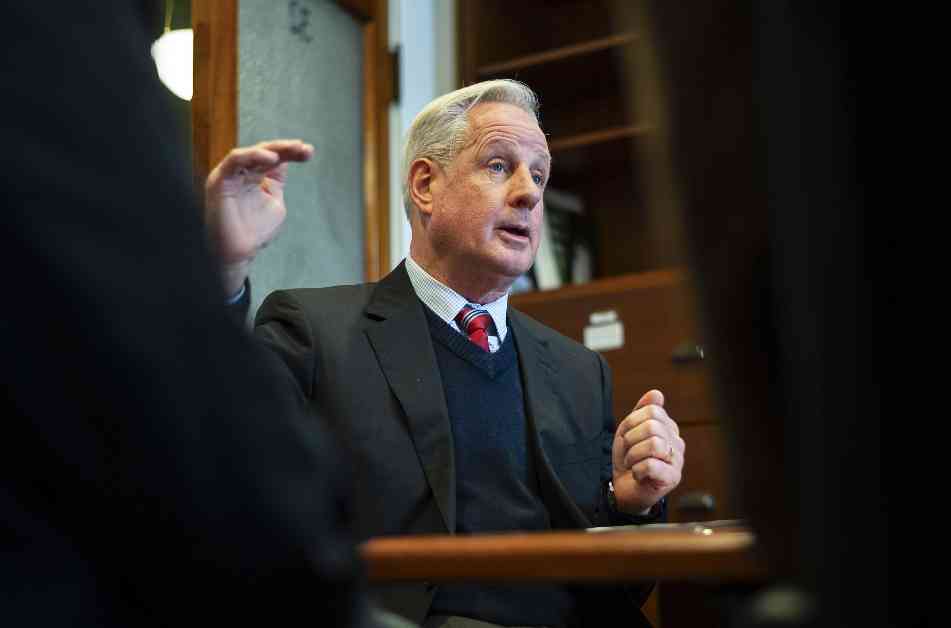The House Energy and Digital Infrastructure Committee at the Statehouse in Montpelier was abuzz with curiosity and concern on Tuesday, February 4, 2025, as Department of Public Service Commissioner Kerrick Johnson took the stand to shed light on the potential impact of President Trump’s tariffs on the state’s energy prices. In a time of uncertainty, Johnson’s testimony left lawmakers and residents alike grappling with the looming questions about the future of energy in Vermont.
The proposed tariffs, which are currently on hold for at least 30 days, have left many Vermont officials in the dark about what lies ahead. Johnson highlighted the lack of clarity surrounding the specifics of the potential tariffs, emphasizing the absence of concrete information to guide their understanding. The scenario was further complicated by the abrupt withdrawal of a public notice in the Federal Register that was meant to provide clarification, leaving many scrambling for answers.
In the midst of this uncertainty, Johnson reassured the committee that one thing was certain—the lights would remain on. Even in the worst-case scenario where HydroQuebec, a significant energy supplier for Vermont, could no longer deliver power to New England, the grid’s reliability would not be compromised. However, the looming question remained: at what cost?
As Johnson delved into the potential financial impacts of the tariffs, painting a picture of looming challenges for utilities like Vermont Gas Systems, the gravity of the situation became increasingly apparent. With projections indicating a substantial financial hit for some energy providers, the pressure to find solutions and mitigate the fallout weighed heavily on those present.
Amidst the uncertainty and complexity of the situation, Johnson’s efforts to navigate the challenges and protect Vermont ratepayers were met with a mix of skepticism and concern from lawmakers. When pressed on potential strategies to shield consumers from the tariff impacts, Johnson’s responses highlighted the ongoing work and collaboration required to safeguard Vermonters against the impending changes.
The establishment of an interagency task force by Governor Phil Scott underscored the seriousness of the situation, signaling a proactive approach to understanding and addressing the potential consequences of the proposed tariffs. Led by Vermont Secretary of Commerce and Community Development Lindsay Kurrle, the task force aimed to assess the short-term and long-term impacts on consumers and ratepayers while exploring opportunities for positive outcomes amidst the uncertainty.
On a broader scale, U.S. Department of Homeland Security Secretary Kristi Noem’s visit to northern Vermont in the wake of a tragic incident involving a U.S. Border Patrol agent shed light on the complex web of challenges facing the region. Noem’s interactions with the agent’s family and colleagues offered a glimpse into the human side of the story, underscoring the personal toll of such events on individuals and communities.
Meanwhile, U.S. Senators Bernie Sanders and Peter Welch’s opposition to Robert F. Kennedy Jr.’s nomination to lead the U.S. Department of Health and Human Services highlighted the intense scrutiny and debate surrounding key appointments in federal agencies. Despite their reservations, Kennedy’s nomination advanced, setting the stage for a pivotal Senate vote that would shape the future of public health policy in the country.
As Vermont grappled with the uncertainties of looming tariffs and federal appointments, the intricate web of interconnected challenges and opportunities underscored the need for strategic foresight and collaborative action. In a landscape fraught with ambiguity, the resilience and adaptability of state officials and policymakers stood as a beacon of hope in navigating the turbulent waters of change and uncertainty.









